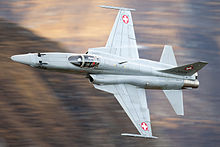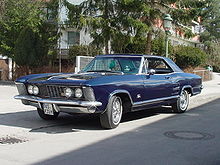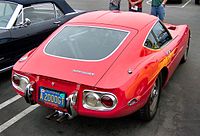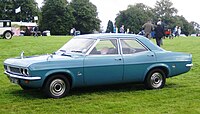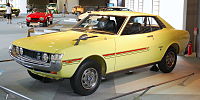
Muscle car is a description according to Merriam-Webster Dictionary that came to use in 1966 for "a group of American-made two-door sports coupes with powerful engines designed for high-performance driving." The Britannica Dictionary describes these as "an American-made two-door sports car with a powerful engine."

Personal luxury car is a North American car classification describing somewhat sporty, sophisticated mass-market coupés that emphasized comfort over performance. The North American manufacturers most often combined engineering, design, and marketing to develop upscale, distinctive "platform sharing" models that became highly profitable.

Compact car is a vehicle size class—predominantly used in North America—that sits between subcompact cars and mid-size cars. "Small family car" is a British term and a part of the C-segment in the European car classification. However, before the downsizing of the United States car industry in the 1970s and 1980s, larger vehicles with wheelbases up to 110 in (2.79 m) were considered "compact cars" in the United States.

Pony car is an American car classification for affordable, compact, highly styled coupés or convertibles with a "sporty" or performance-oriented image. Common characteristics include rear-wheel drive, a long hood, a short decklid, a wide range of options to individualize each car and use of mass-produced parts shared with other models. The popularity of pony cars is largely due to the launch of the Ford Mustang in 1964.

In the automotive industry, rebadging is a form of market segmentation used by automobile manufacturers around the world. To allow for product differentiation without designing or engineering a new model or brand, a manufacturer creates a distinct automobile by applying a new "badge" or trademark to an existing product line.

A hardtop is a rigid form of automobile roof, typically metal, and integral to the design, strength, and style of the vehicle.

A fastback is an automotive styling feature, defined by the rear of the car having a single slope from the roof to the tail.

The tailfin era of automobile styling encompassed the 1950s and 1960s, peaking between 1955 and 1961. It was a style that spread worldwide, as car designers picked up styling trends from the US automobile industry, where it was regarded as the "golden age" of American auto design and American exceptionalism.
American Specialty Cars was an automobile supplier of highly engineered and designed roof systems, body systems and other specialty-vehicle systems for the world’s automakers. The company was headquartered in Warren, Michigan, in the United States and was one of several coach convertible builders. ASC sold assets to its Creative Services division in late 2016 to Roush Industries. In late June 2017, ASC effectively ceased operations, laying off all staff and had tooling and production equipment removed from the manufacturing plant in Lexington, Kentucky.

The Chicago Auto Show is held annually in February at Chicago's McCormick Place convention center. It is the largest auto show in North America.
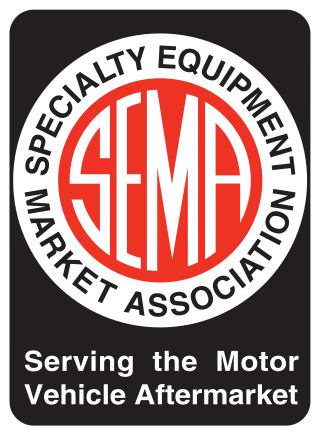
Specialty Equipment Market Association (SEMA) of the automobile aftermarket was formed in 1963 by Paul Schiefer, Roy Richter, Ed Iskenderian, Els Lohn, Willie Garner, Bob Hedman, Robert E. Wyman, John Bartlett, Phil Weiand Jr, Al Segal, Dean Moon, and Vic Edelbrock Jr. and now consists of 6,383 companies worldwide, bringing together aftermarket manufacturers, original equipment manufacturers (OEM), media, car dealers, specialty equipment distributors, installers, retailers, and restoration specialists.
Car and Track was America's first nationally syndicated auto racing and car test television show. The executive producer for car and track productions was, John B Norman of Grand Rapids Michigan. "Big Bud Linneman filmed and MC the show. His son Dave drove the cars at a little-known track outside Grand Rapids Michigan, Grattan. The show aired on Saturday mornings normally and the ongoing sponsor was Casite automotive additives based in Hastings Michigan. John Norman owned an advertising agency in Grand Rapids and this was the basis for Executive Producers the production company. Executive producers also had an office in Los Angeles California. Norman would arrange with automakers to receive cars to test at the track and Grattan. Produced by Car and Track Productions, it was hosted and produced by Bud Lindemann, a famous race commentator of the time. After the TV series ended, Bud and his son David Lindemmann continued to film many types of racing. They compiled one of the most important film libraries of the early days of NASCAR. Car and Track was based in Grand Rapids, Michigan. This allowed them to have close relationships with Detroit automotive manufacturers and suppliers.
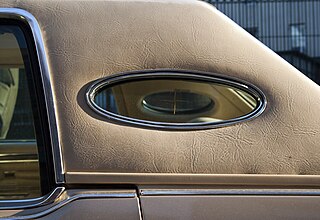
An opera window is a small fixed window usually behind the rear side window of an automobile. They are typically mounted in the C-pillar of some cars. The design feature was popular during the 1970s and early 1980s and adopted by domestic U.S. manufacturers, most often with a vinyl roof.
American Muscle Car is a weekly television show on Speed, produced by Restoration Productions LLC., about muscle cars. Original release was in 2003. Each episode provides a timeline of each vehicle's history beginning with its first year of production to its most recent year of production. The show was initially designed to showcase traditional muscle cars such as the Chevrolet Camaro, Ford Mustang, and Dodge Charger. It eventually added other performance vehicles such as the Shelby Cobra and the, and even began to focus on specific eras such as the (disambiguation)|. In 2006 season, the show's focus was expanded to include designers and engineers of muscle car era.
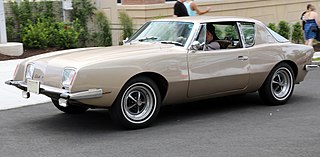
The Avanti is an American performance sports coupe based on the Studebaker Avanti and marketed through a succession of five different ownership arrangements between 1965 and 2006.
This is a list of automobiles produced for the general public in the North American market. They are listed in chronological order from when each model began its model year. If a model did not have continuous production, it is listed again on the model year production resumed. Concept cars and submodels are not listed unless they are themselves notable.

Hidden headlamps, also commonly known as pop-up headlamps, pop-up headlights, flip-eye headlamps, or hideaway headlights, are a form of automotive lighting and an automotive styling feature that conceals an automobile's headlamps when they are not in use.
A retro-style automobile is a vehicle that is styled to appear like cars from previous decades. Often these cars use modern technology and production techniques. This design trend developed in the early 1990s and led to almost all automobile brands introducing models that referenced previous cars of the 1950s and 1960s.

